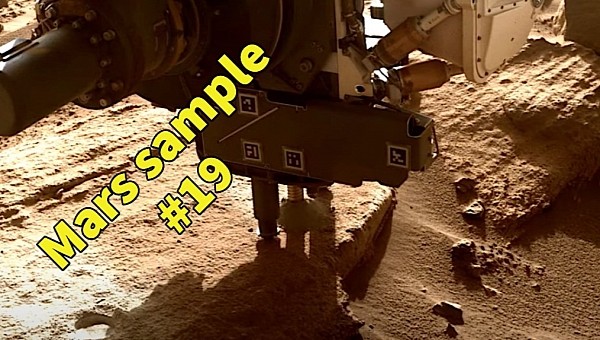The American space agency knew ever since it started work on the Perseverance that the Mars rover would be the most capable machine of its kind ever sent by humans up there. And in the two years it has been on location in the Jezero crater, the six-wheeler more than confirmed that.
In the time that has passed since its landing in February 2021, the rover has done things none of its predecessors were capable of doing. Just to name two of the most important such things, it was capable of generating a tiny amount of oxygen, proving there are merits to terraforming ideas, and helped launch a tiny helicopter, showing everyone sustained powered flight in the atmosphere of an alien planet can be achieved.
Soon after arriving, Perseverance also received another mission: collect, store, and drop samples of the Martian soil for a subsequent mission, the Mars Sample Return, to pick up and bring back to Earth for study.
Last we heard of Perseverance’s performance with this task was in February, when NASA released an image showing where the rover dropped ten small titanium tubes containing the samples it collected. These are to act as backup cache for the Sample Return mission, in case something happens to the rover itself.
But the ten tubes it dropped are not the only ones collected. In all, a total of 18 samples were picked up by Perseverance, with the 19th joining the stash inside the rover on March 30. This latest sample is the first of the rover’s new science campaign, meaning it comes from an area of the Jezero crater not previously surveyed: the top of its delta.
NASA calls this particular spot on Mars the Berea, and it’s an area of particular interest to the agency because the materials found there might not have originated there, but in some other location on Mars. Ancient rivers could have brought them down to this area eons ago, making it possible for the rover to have a look at other places of the planet without leaving the Jezero crater.
Berea is also rich in carbonate, so it has a great chance of containing fossilized lifeforms, if we are to judge by similar features here on Earth.
The latest sample collected by Perseverance is the 16th corer rock piece, with the other samples containing either regolith or parts of the Martian atmosphere. As the first of the new science campaign, it will be followed by others in the coming months. You can see a video of the sample being drilled below this text. After it’s done with Berea, Perseverance will move on up the Jezero’s slopes, to reach a place called Castell Henllys.
As for the Mars Sample Return mission, it is scheduled to depart in 2027.
Soon after arriving, Perseverance also received another mission: collect, store, and drop samples of the Martian soil for a subsequent mission, the Mars Sample Return, to pick up and bring back to Earth for study.
Last we heard of Perseverance’s performance with this task was in February, when NASA released an image showing where the rover dropped ten small titanium tubes containing the samples it collected. These are to act as backup cache for the Sample Return mission, in case something happens to the rover itself.
But the ten tubes it dropped are not the only ones collected. In all, a total of 18 samples were picked up by Perseverance, with the 19th joining the stash inside the rover on March 30. This latest sample is the first of the rover’s new science campaign, meaning it comes from an area of the Jezero crater not previously surveyed: the top of its delta.
NASA calls this particular spot on Mars the Berea, and it’s an area of particular interest to the agency because the materials found there might not have originated there, but in some other location on Mars. Ancient rivers could have brought them down to this area eons ago, making it possible for the rover to have a look at other places of the planet without leaving the Jezero crater.
Berea is also rich in carbonate, so it has a great chance of containing fossilized lifeforms, if we are to judge by similar features here on Earth.
The latest sample collected by Perseverance is the 16th corer rock piece, with the other samples containing either regolith or parts of the Martian atmosphere. As the first of the new science campaign, it will be followed by others in the coming months. You can see a video of the sample being drilled below this text. After it’s done with Berea, Perseverance will move on up the Jezero’s slopes, to reach a place called Castell Henllys.
As for the Mars Sample Return mission, it is scheduled to depart in 2027.

















